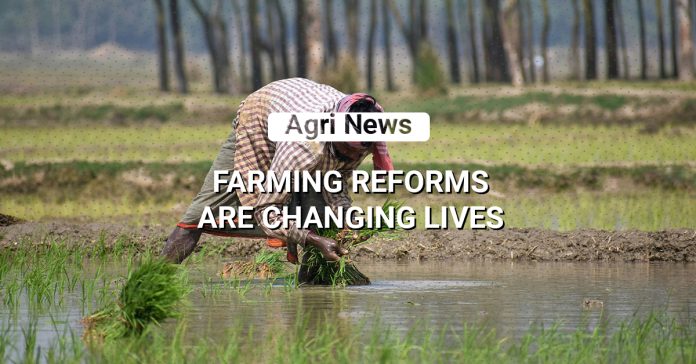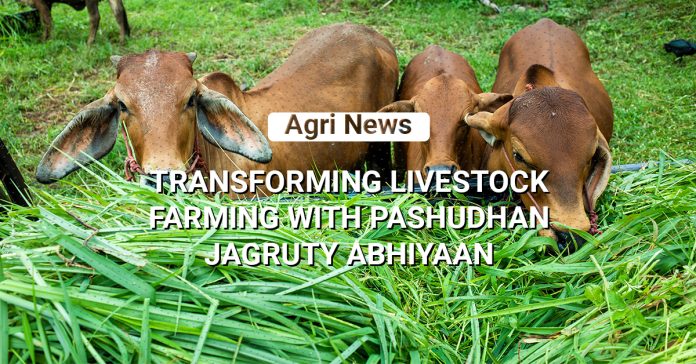India is an agricultural country where a significant percentage of the population depends on agriculture for their livelihood. To ensure farmers get fair prices for their crops, the Indian government has set the Minimum Support Price (MSP) for various crops. In addition, the government has implemented several developmental programs, policies and schemes to increase farmers’ incomes.
Overview
Various initiatives have been introduced to support farmers in India, including income transfers through PM-KISAN, crop insurance via PMFBY, improved irrigation access with PMKSY, infrastructure creation through AIF and production loans through KCC. Additionally, 10,000 FPOs have been established and promoted, and other schemes such as NMSA, drone technology adoption, Bee-Keeping, Rashtriya Gokul Mission, Blue Revolution, Interest Subvention Scheme, Agro-forestry, restructured bamboo mission and implementation of new generation watershed guidelines have been implemented.
Since 2018-2019, the Indian government has raised the Minimum Support Price (MSP) of 22 Kharif, Rabi and other commercial crops by at least 50% over the all-India weighted average cost of production, as mandated. Furthermore, the National Statistical Office (NSO) conducted the 77th round of Situation Assessment Survey (SAS), 2019 of Agricultural Households in rural areas to estimate the average monthly income per agriculture household from various sources.
Current MSP of all the 22 Crops
| Sl. No. | Commodity | Variety | 2018-19 | 2022-23 | % Raise in MSP since 2018-19 |
| KHARIF CROPS | |||||
| 1 | PADDY | Common | 1750 | 2040 | 17% |
| Grade ‘A’ | 1770 | 2060 | 16% | ||
| 2 | JOWAR | Hybrid | 2430 | 2970 | 22% |
| Maldandi | 2450 | 2990 | 22% | ||
| 3 | BAJRA | 1950 | 2350 | 21% | |
| 4 | RAGI | 2897 | 3578 | 24% | |
| 5 | MAIZE | 1700 | 1962 | 15% | |
| 6 | TUR (ARHAR) | 5675 | 6600 | 16% | |
| 7 | MOONG | 6975 | 7755 | 11% | |
| 8 | URAD | 5600 | 6600 | 18% | |
| 9 | GROUNDNUT | 4890 | 5850 | 20% | |
| 10 | SUNFLOWER SEED | 5388 | 6400 | 19% | |
| 11 | SOYABEEN (yellow) | 3399 | 4300 | 27% | |
| 12 | SESAMUM | 6249 | 7830 | 25% | |
| 13 | NIGERSEED | 5877 | 7287 | 24% | |
| 14 | COTTON | Medium Staple | 5150 | 6080 | 18% |
| Long Staple | 5450 | 6380 | 17% | ||
| RABI CROPS | |||||
| 15 | WHEAT | 1840 | 2125 | 15% | |
| 16 | BARLEY | 1440 | 1735 | 20% | |
| 17 | GRAM | 4620 | 5335 | 15% | |
| 18 | MASUR (LENTIL) | 4475 | 6000 | 34% | |
| 19 | RAPESEED & MUSTARD | 4200 | 5450 | 30% | |
| 20 | SAFFLOWER | 4945 | 5650 | 14% | |
| OTHER CROPS | |||||
| 21 | COPRA (Calendar Year) | Milling | 7511 | 10590 | 41% |
| Ball | 7750 | 11000 | 42% | ||
| 22 | JUTE | 3700 | 4750 | 28% |
Important Information
- The Indian government has set the Minimum Support Price (MSP) for various crops to ensure farmers get a fair price for their crops.
- The government has implemented several developmental programs, policies and schemes to increase farmers’ incomes, such as PM-KISAN, PMFBY, PMKSY, AIF, KCC and NMSA.
- The adoption of new technologies in agriculture, such as drone technologies, has the potential to revolutionize Indian agriculture.
- The MSP for various crops has been increased since 2018-19, with significant increases observed for crops such as paddy, wheat, cotton, tur (arhar) and niger seed.
Conclusion
The Indian government has taken several measures to improve the income and living conditions of farmers in the country. This includes increasing the minimum support price for crops, implementing developmental programs, schemes and policies, promoting the use of technology in agriculture and creating infrastructure through the Agri Infrastructure Fund. The National Statistical Office has conducted surveys to estimate the average monthly income per agricultural household and the government has adopted measures such as PM-KISAN, PMFBY, PMKSY and KCC to provide financial assistance to farmers. Overall, these measures aim to make Indian agriculture more resilient to changing climate conditions and improve the income of farmers in the country.










